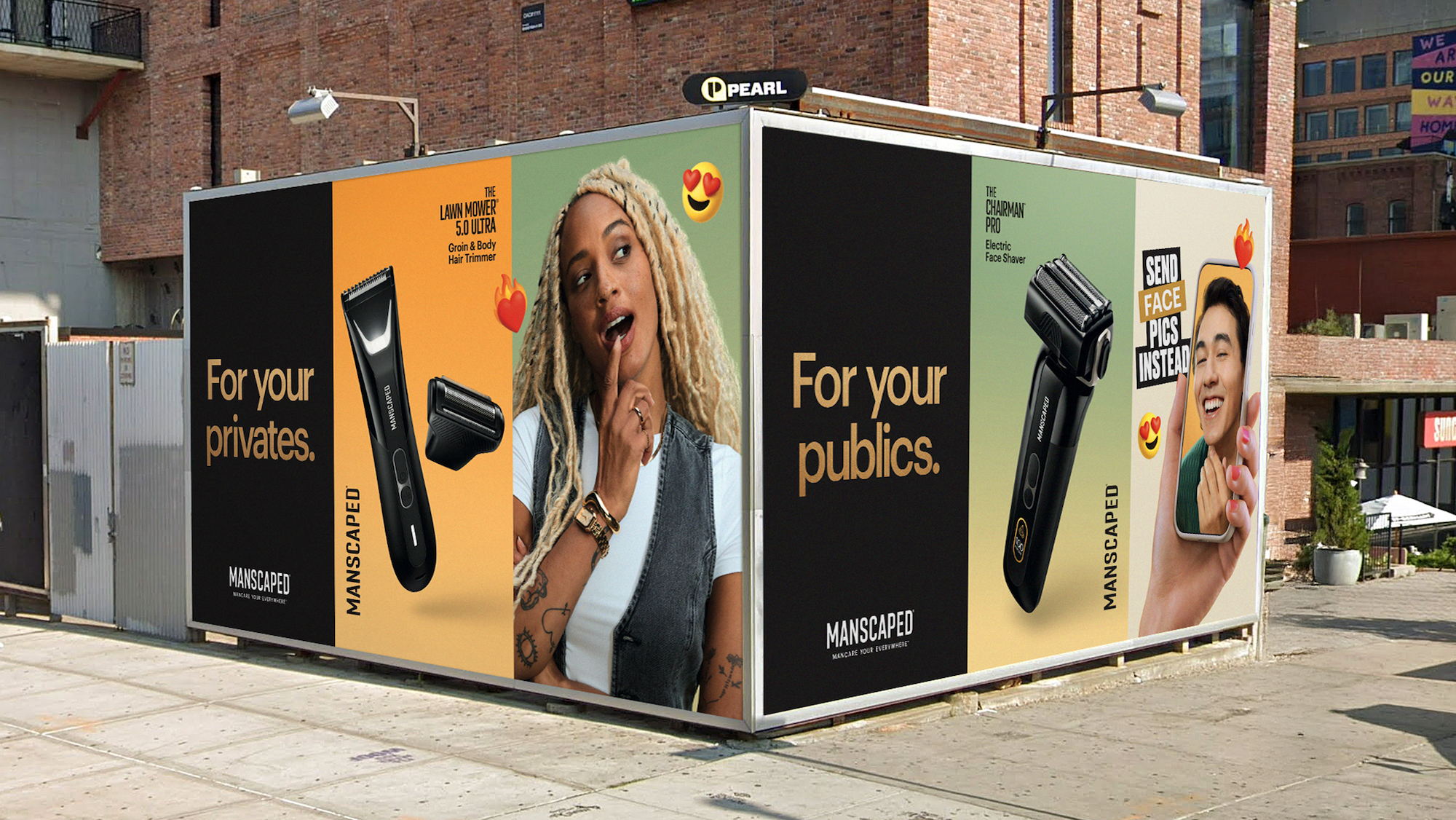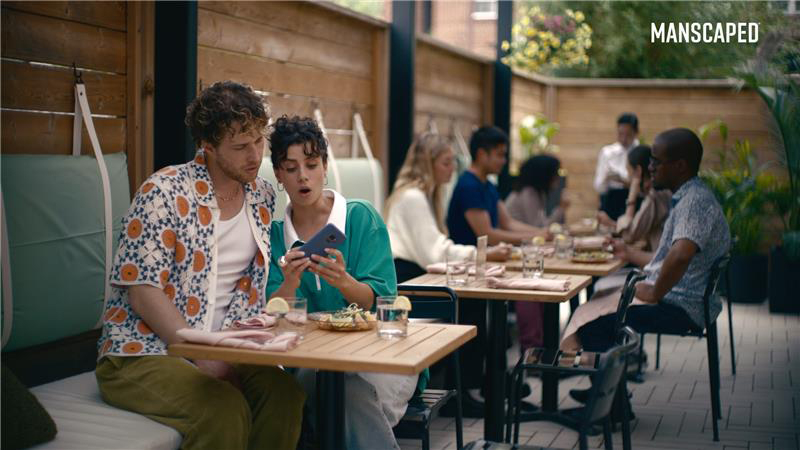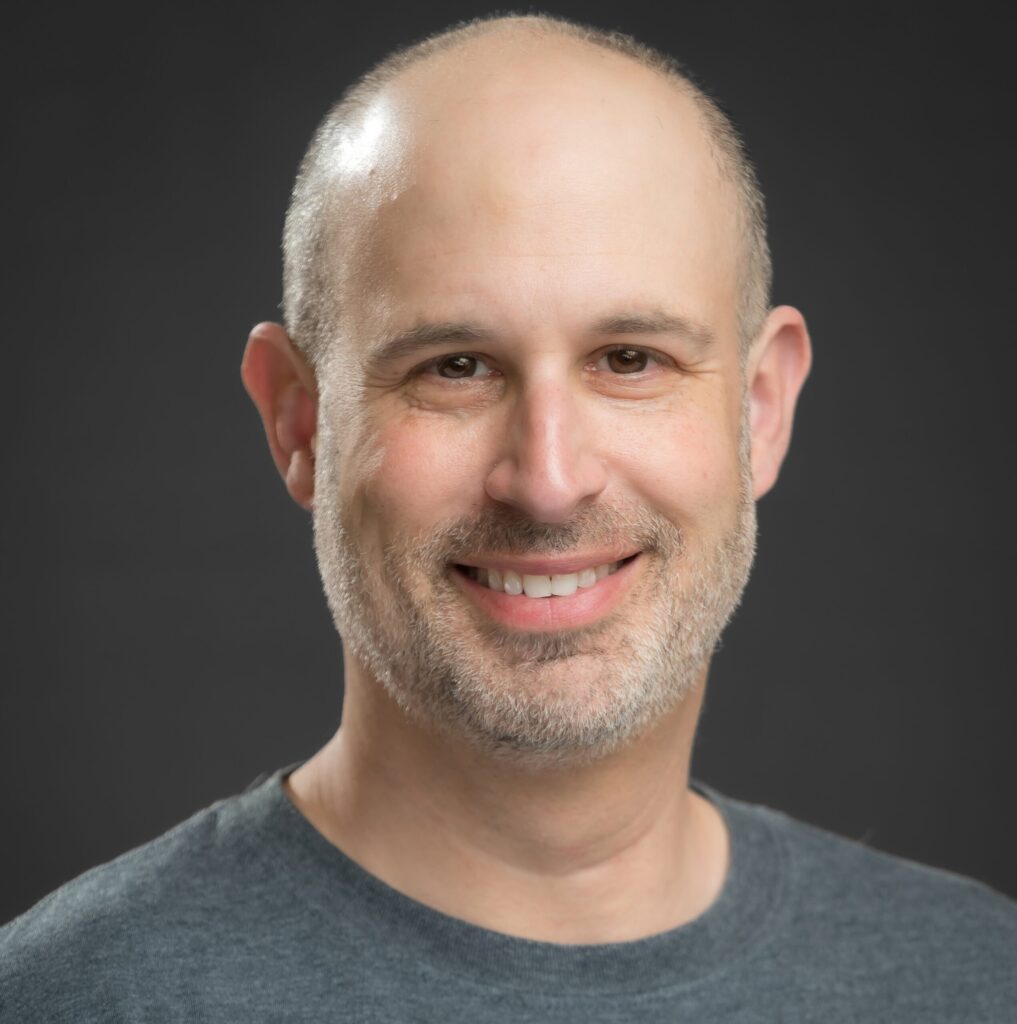Manscaped is best known for its below-the-waist grooming products. But with its latest campaign, “Send Face Pics Instead,” the groin specialists are moving onward and upward into the face category—the next step in its brand evolution.
The campaign’s hero spot cheekily recounts the long history of men “oversharing” unsolicited photos, urging them to replace those unwanted texts with pics of freshly-groomed faces shaped by the brand’s latest beard trimming products.
To back up what many have long suspected—that face pics would be more appreciated by women within the digital dating world—Manscaped commissioned an actual study with Kwantlen Polytechnic University and the O.R.G.A.S.M Research Lab (O-Lab) to examine varying digital flirting preferences among genders. The study found that while 51% of men have sent unsolicited photos, just 4% of women respond positively. And men are nine times more likely to get a response when they send a face pic versus any other body part.
“The conclusion that they already had—and we then did another research study together with them—was to confirm our suspicions that you will be way more successful if you send a picture of your face than if you send a picture of your “down there,”” said Marcelo Kertész, CMO at Manscaped. “So having that gave us the confidence that we are on the right side of things. Science backs us up, and we can talk about that in a very open way.”
The study’s authors, Dr. Cory Pedersen and O-Lab’s Amanda Champion, are making multiple podcast appearances to get the word out, while bi-coastal OOH installations, creator and influencer content, and a Tinder app takeover will round out the marketing plan. We spoke with Kertész about the campaign inspiration, brand evolution, target market, strategic use of humor and his approach to creator-led content.
Chief Marketer: What inspired the “Send Face Pics Instead” campaign? And how does it fit into the brand’s evolution?

Marcelo Kertész, CMO at Manscaped: When we started this company, we knew the groin was just the start. It was one of the defining aspects of the male anatomy, but we knew that there was way more to that. But because no one was addressing that, we felt that there was a task to be achieved. We knew that it was just a matter of time that we would move towards the whole body, starting with the face, which is kind of the billboard of our beings. So when we were ready to go as a brand more into that face space, we engaged with an external agency, Special U.S., to develop this campaign.
We were mostly known for work in the groin, so we wanted a campaign that took that into consideration … So we called it internally—I’m sorry, it sounds painful—but we used the groin as a trampoline for the face. And that’s where we landed on this concept, right in the sweet spot of where Manscaped lies in culture—having those sometimes tougher conversations and facilitating those conversations with humor, but also helping men move forward, evolve either their grooming behavior, or just as human beings. So the “Send Face Pics Instead” concept came as, Hey guys, we know we are known for groin. But just like us, it’s time to move up and move on, and send face pics instead.
CM: You have been marketing your beard trimmer products for a while, correct? Does this campaign represent the first time you’ve gone for broad reach?
MK: Yes, it does. To your point, before this campaign we had launched the Beard Hedger, which is our beard trimmer. We had launched the Handyman, a compact face shaver. But those were initial steps at learning more about the category. We knew that there was traction on those products because we listened to our consumers constantly. But this is the first campaign that installs us as a brand for your face. It’s the culmination of having a good assortment of products, so it’s not just one or two, but also now going for that authority as a brand in that space. Now we have a face shaver, the Chairman Pro, we still have the Beard Hedger or the Handyman, we have a Skull Shaver, which is not necessarily face, but it’s part of our facial expression in a way. So it’s that maturity on the product side, but then as a brand coming for that category more loudly.
CM: What are the strategic marketing goals of this campaign? Are there any KPIs you can share? And who specifically are you marketing to, if that’s different than previously?
MK: Let me start with the audience first. I do think we have a core audience that skews a little younger, but to be honest, it’s very wide. From 18 to 54, we are still very strong across the board with a little bit of the younger audience—just because of the brand voice, I would imagine. But the interesting thing about Manscaped in terms of audience and even age groups is that when we started in the groin, there were a lot of young men who more naturally adopted their behavior, and they started telling their dads that they should do a better job “down there.”
And now as we get to face shaving, it’s in the other direction a little bit because it’s usually a very traditional, emotional moment when a father teaches a son to shave and what tools to use. And those behaviors tend to stick for a long time. So like I said, we do skew a little younger, but we play across the board. And I think especially for face, we are yet to see how it resonates with both audiences. But in the past it’s interesting that for different reasons, they both have a strong resonance to the brand.
Now, in terms of KPIs, the main KPI is our authority and being recognized as a force in the face shaving space. We are very confident about the quality of our products. When we sell those products both in retail marketplaces and dotcom, the response has been really strong about the quality of the product, the design of the product. But it’s natural to expect that people see us first as a groin brand and they’re still learning about us as a face shaving brand.
So [it’s] how we start to score in that category as being a lead brand in that space. We are fighting against some heavy names that have been around for literally hundreds of years. In a way it’s exciting because we are the challengers, and I think we have a voice that’s resonating more with current times.
CM: How are you marketing this campaign to consumers? Is the media mix different from previous campaigns?
MK: The media mix profile does change a little bit [compared to] Manscaped in its early years. We started strong at D2C, of course. We had the privilege, the luck, the foresight to be in retail and be omnichannel from the get-go. But there was a strong D2C component. Our dotcom was still the bulk of our sales. And that naturally leads us to a lower funnel gravity that pushes a lot of dollars [toward] that part of the funnel and those channels that are more effective in those spaces.
With this campaign, because it’s a brand campaign, it’s more upper funnel. So we will have more TV presence than when we have a typical product only or a more performance-driven campaign. We are having some fun with out-of-home presence in Austin and Chicago, in Brooklyn, in San Francisco. So it’s going to be more upper funnel compared to our typical day-to-day marketing push.
CM: And the press release mentions a dating app takeover.
MK: This campaign has some interesting aspects in my opinion. We really wanted to insert ourselves in a cultural conversation. Because this is where I feel we have—because of our tone of voice—something that can be helpful to society in general. And also, of course, as a marketing strategy it’s a way to insert ourselves in a conversation that is already happening, so we can have more voices and debate and attention. Because we are looking for attention. But at the same time, it’s a sensitive topic and we don’t take that lightly. Since day one, we said we want to make sure that we are on the right side of things.
CM: How did you approach the research aspect of the campaign?
MK: We partnered up with a university group that was already leading a study … Basically they were studying the phenomena of people exchanging pictures of their private parts. And the conclusion that they already had—and we then did another research study together with them—was to confirm our suspicions that you will be way more successful if you send a picture of your face than if you send a picture of your “down there.” So having that gave us the confidence that we are on the right side of things. Science backs us up, and we can talk about that in a very open way.
And then when we looked at places where people exchanged the most photos of their genitalia, dating apps were a place where a lot of that happened. So we felt that we had both the opportunity and actually almost a task to do of going to those spaces, partnering up like we did with Tinder, and then launching the campaign there. We are also having conversations in places where we see an opportunity to have better behavior with better outcome, and more attention to our brand as well.
Chief Marketer: Let’s talk about creator-led content. You’ve started the Manscaped Makers Network, a partnership with up-and-coming creators to help you create content. Is having creators talking about a taboo topic such as this—which is hard to balance while ensuring everything is appropriate—easier in some way? If you have that reach and that trust from the creator, maybe you can get more people on board.
MK: There’s basically a few different buckets that we can put this in. When we are talking about creators, at least internally, there’s two different approaches. One is the influencers, where we partner up with them and we have a message that we want to convey, but they do that in their own channels, in their own voice. Sometimes we do [amplify] that voice, but it’s basically, Hey, this is what we want to talk about. Can you partner up with us to talk about this? The other is this network of creators that create content for us that we can then push through our networks and to our channels. And depending on the kind of content, we’ll select the best place to push them through.
When I compare that to traditional production, the basic idea is, there is a chance to get more voices. Because in the past, in a traditional way, when you have a script and then you move into production, we try to stick to what we planned and a lot of the effort and the money and the brain power is [about], how can we craft that message in the most elevated, perfectly-crafted way? And with creators … the relationship becomes much more, Hey, we want to say that. Can you help us say that? Go and do your thing and come back to us. Of course, it’s a hit or miss. Sometimes it comes back and it’s like, eh, that’s not really what we meant by that.
But I do think that this approach is very powerful for a few reasons. One, I think it creates more plurality of voice. You have a message that you want to say, but instead of trying to be monolithic and just push it over and over and over again with the same exact format, you create many more different formats with different voices, with different approaches, reaching out and touching different people. And it is authentic, too.
Yes, I believe that the crafted message from the brand has enormous value, and I don’t think it should go anytime soon. But there is a level of authenticity you get, too, when you reach out to this individual—meaning independent creators—that is really powerful. So for us at Manscaped, it’s a combination. It’s not one or the other. It’s how do we orchestrate the three, and how are we strategic on selecting which one is appropriate for what?
CM: In terms of experimenting with new platforms or communities, have you had any success there? Are you trying new things all the time?
MK: We are. I’m not the best person to go in depth with the platforms and what’s new at each platform, but this is something that we know is highly incentivized in our teams and the leads for each platform; they’re always going for what’s happening. We like being at the forefront of marketing in terms of new tools, adopting them early, testing, even if sometimes it doesn’t show success, but we like that idea. We are not the ones that wait for the second wave and for things to be already proven—to a point where we separate part of our budget for each channel lead to just experiment. This budget we don’t expect—I mean, of course we always expect—but we don’t expect results formally from it. And that creates a level of freedom that is important if you want to be in the forefront of marketing and not just repeating other people’s formulas and recipes.

CM: Do you have specific strategies for attracting younger generations?
MK: I believe that our marketing in general, especially compared with other brands in the categories, does skew a little younger. Our voice resonates with a younger audience, but it’s such a natural thing for us that we don’t need a program to reach and target a younger audience. I think the brand voice already does that. And the fact that our marketing team is actually made up of a lot of young people. I’m off the curve from our group. We never needed to deliberately create a program to reach out to a younger audience. I think it’s just the core of Manscaped. But we did deliberately make efforts to extend to an older audience because we thought that there was a lot of people sharing the love for Manscaped, and maybe if we just let things take its natural course, we would not be as successful in that space.
CM: Do you use any caution when it comes to intersecting with the “manosphere,” or any of the hyper-masculine, potentially alienating groups online? I’m sure the brand’s sense of humor deflects it a little bit, but you must have to strike a balance.
MK: Yeah. And you got it perfectly. Humor is a big component. There are a few interesting aspects from my perspective, from what you called out. When I joined Manscaped, and this precedes me so I can’t take any credit for it, Manscaped already had partnerships with UFC on what could be perceived as one end of masculinity, the more physical, strong, man culture. And also drag queen shows. So I was both surprised and excited to see how the brand played well in all [areas of] what we could try to define as what it means to be a man in 2025—or 2020, as it was at the time. That is something that we had already, and of course we don’t take it lightly and we take really good care of that. The main point is to keep that strong position, in my opinion.
So, humor is one. And not just humor in terms of humor as a format, but as our personalities. We try to not take ourselves too seriously. We are the first ones to be humorous about ourselves and not be preachy or pretentious … When we start pointing fingers or telling people what is right, what is wrong, that’s a big red flag for us and we get away from it … We try to be that cool older brother that shares some tips with the younger brother. But it’s brother advice, it’s not coming from the parents, not coming from the pastor at church or your teacher.
CM: Lastly, can you share your growth strategy for the brand?
MK: The big one is face category. We created and we dominate the groin category. We are still the go-to brand. Of course, there are new challengers and newcomers from high and low coming for that every day. And we strongly defend that position. But for growth, the face category is a big one. An interesting thing for us in terms of our business is that we are almost in opposite positions in those two categories. In one of them, the groin, we created. We’re the market leaders and we need to defend our brand. In the face, we are the challengers. We are here to eat someone else’s lunch. But that’s a big part of our growth strategy. And the second layer of our growth strategy is really expanding on other channels, retail and marketplaces.









